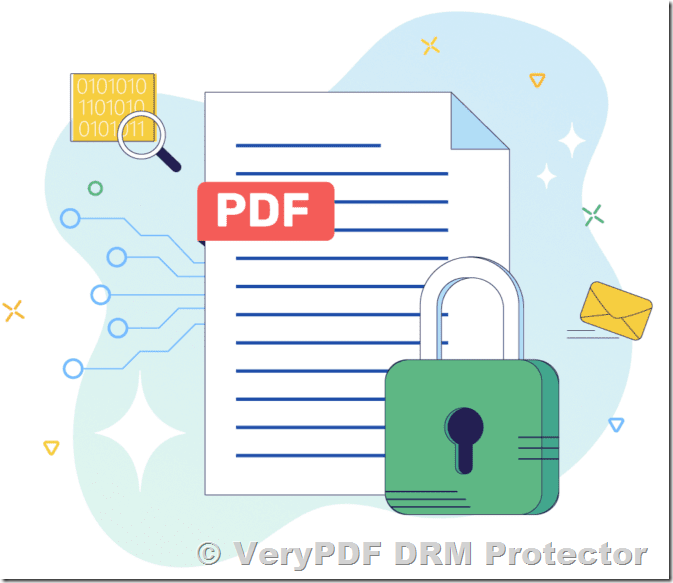When protecting a PDF file with a password, a new challenge arises: how to securely send the password to the intended recipient. Many traditional methods, such as calling or sending the password via a separate email or SMS, offer basic security but still carry certain risks. In today’s digital age, there’s a better solution that eliminates the need to share passwords altogether.
https://drm.verypdf.com/purchase/
Traditional Methods for Sending Passwords
Here are some commonly recommended methods for sharing the password securely:
- Call the recipient: Share the password over the phone. This is considered an “out-of-band” communication method and leverages voice authentication.
- Send via SMS or another email address: If the PDF is sent by email, share the password via SMS or a separate email account to reduce the risk of interception.
- Postal mail: For highly sensitive documents, you can mail the password to the recipient using traditional postal services.
While these methods add an extra layer of security, they are often cumbersome, prone to human error, and still susceptible to interception or misuse.
Why VeryPDF DRM Protector is the Best Option?
Instead of relying on passwords, consider using VeryPDF DRM Protector. This tool eliminates the need for password sharing by adding advanced Digital Rights Management (DRM) features to your PDF file. Here’s how it works and why it’s the most secure method:
Key Features of VeryPDF DRM Protector
- Add DRM Protection: Apply robust restrictions to your PDF file, including:
- File Expiry Dates: Set a specific expiration date after which the file becomes inaccessible.
- Watermarks: Add visible or invisible watermarks to deter unauthorized sharing and identify potential leaks.
- IP Address Restrictions: Limit access to specific IP addresses to ensure that only approved users can view the document.
- Prohibit Downloads: Prevent recipients from downloading the PDF file, keeping it confined to the secure server.
- Prohibit Printing: Disable printing to avoid the creation of physical copies.
- Prohibit Screenshots: Block the ability to take screenshots, reducing the risk of unauthorized reproduction.
- Generate a Secure URL: Once the DRM options are applied, VeryPDF DRM Protector generates a secure URL for the protected PDF file. This URL ensures controlled and restricted access to the document.
- Share the URL: Instead of sharing a password, send the secure URL to the recipient. The recipient can access the document only under the conditions you’ve set, ensuring full control over your content.
Advantages of Using VeryPDF DRM Protector
- Eliminates Password Sharing: No need to share or manage passwords, reducing the risk of interception or misuse.
- Maximum Security: The combination of DRM restrictions ensures that your document remains protected against unauthorized access and distribution.
- Ease of Use: VeryPDF DRM Protector is user-friendly and allows you to set up restrictions quickly and efficiently.
- Comprehensive Control: You have full control over who can access your document, how they can use it, and for how long.
Why Traditional Methods Are Less Secure
Traditional methods like phone calls, SMS, and email rely on “out-of-band” communication but still involve sharing sensitive information. These methods can be intercepted, forgotten, or mishandled. In contrast, using VeryPDF DRM Protector removes the need for password sharing entirely and offers advanced security features that go beyond basic password protection.
Conclusion
Sharing passwords for password-protected PDFs can be a hassle and a security risk. Instead of relying on traditional methods, use VeryPDF DRM Protector to add DRM protection to your PDF file. By setting restrictions like file expiry dates, adding watermarks, limiting access by IP address, and prohibiting downloads, printing, and screenshots, you can ensure your sensitive information stays secure. Share the secure URL generated by VeryPDF DRM Protector, and enjoy peace of mind knowing your document is protected.

